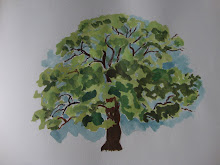As students, our projects and assignments had to be neatly typed before submission . And most trooped in to typewriting institutes to seek the services of a typist. I was lucky, since my grandfather’s typewriter - the Underwood Champion - was available at home and weeks of practice every summer had ensured that I had not totally forgotten how to type. To save on money, I painstakingly typed the first draft of my thesis ( for my postgraduate requirement). It was an effort considering that those days we had no whitener solution to mask the errors. All we had was a typewriter eraser that was made with hard rubber, that invariably smudged the paper. And one had to master the art of typing with just the right amount of pressure, so as not to puncture a hole in the paper. Well, when I went to my advisor with the draft, she had one look at it and asked me to change the typist!
I continued to use the typewriter for many years ( and had subsequently improved my typing skills!) till a problem cropped up with the space bar of the machine. And the guy who came in to repair the more recent typewriters ( this is about 15 years ago) had no clue on how to set it right. And there it was laid to rest…. Until I read this blog of note.
Homes with a typewriter , almost always had a Pitman manual to help you learn to use one. There was even an illustration in the first few pages to show how to be seated while typing. Feet together, back erect, placement of fingers on the keyboard and so on...
Those who did not own a typewriter had to go to the institute, and there was one in almost every locality, to learn. And it was important since typing was at one time considered an added qualification for any job!
Who ever imagined that one day the machine would be obsolete and taken over by the computer. I was in for a surprise when I tried to date my typewriter. I have not really succeeded in doing so, but it seems to have been introduced in the 1930s.
I gather that the typewriter is made of 1800 movable parts! And that factories that made typewriters used the same equipment and methods as factories that made guns, and so, when US entered the Second World War, most of the manufacturers changed to making rifle barrels as there was more need for arms.
The first typewriter was made commercially by Remington & Sons in 1873. And 550 were made in the first year. Initially people did not think that it would replace the written word, but it did. And its introduction contributed greatly to the emancipation of women. They entered the work force in great numbers.
There are now only two companies that manufacture typewriters and the largest manufacturer is Godrej and Boyce in Mumbai, India, who still make at least 12,000 units each year (the other company being Olympia). A major number is exported to countries like Indonesia, the Philippines, Sri Lanka, Angola, Mozambique, Morrocco, and the UAE . The remaining is sold in India in 15 Indian languages The company expects the demand to last only for another 3-5 years before they fade into history .
The typewriter may disappear, but the QWERTY keyboard has remained the universal keyboard right from the experimental machines to the present day computers. Nobody really knows why the letters were arranged in this manner. The quick brown fox jumps over the lazy dog – is the panagram ( that contains all the 26 letters of the alphabet) used to test the typewriter and computer keyboard
So, what does one do with their old typewriters. Suddenly, it appears that they have become valuable and are sold on eBay. And what about the one I own? Well, it shall remain with me for a long, long time. For all the memories associated with it.


